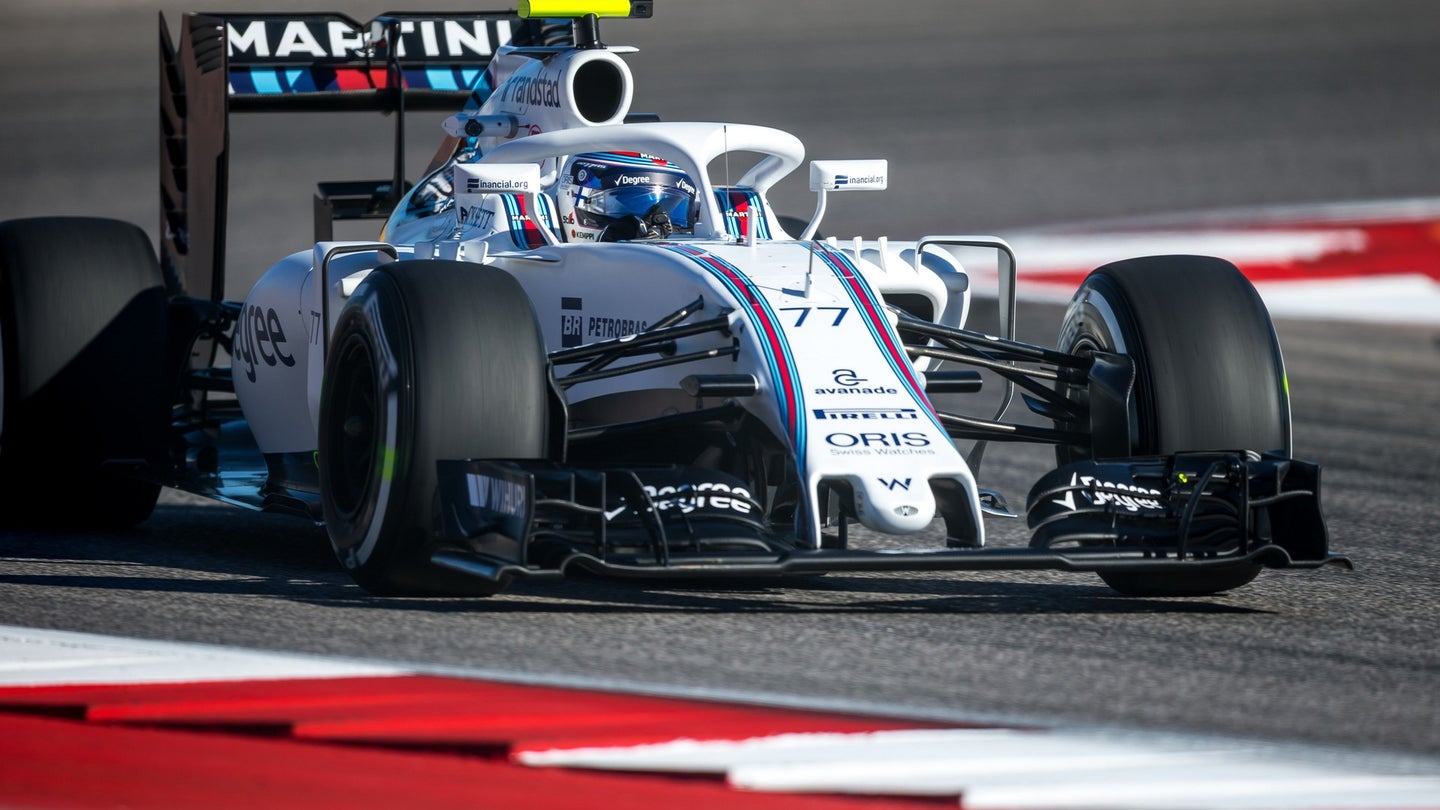Williams: Halo Proving ‘Quite Difficult’ for 2018 F1 Chassis Integration
Other teams including Force India have already complained of the soon-to-be mandatory equipment.

Formula 1 officials made a decision to mandate the Halo cockpit safety device for next season despite nine out of 10 teams voting in opposition. Deemed somewhat "unfinished" by part of the racing community, the protective equipment has thrown a kink in the development of some 2018 F1 cars. Force India was the first to announce the Halo's flaws, saying it could "delay next year's car" and its development. Now, Williams technical chief Paddy Lowe explains that it's become especially frustrating to build the car around the pronounced headpiece, doubting its effects on the car.
Lowe mentioned that the Halo raises more of an issue with the car's construction rather than its aerodynamics, a worry for some in regards to the equipment.
"It's a big project to put that in the car," said Lowe. "We're still working on it, and the integration is quite difficult.
"There are very high loads to accommodate, so I think the bigger impact is structural rather than aerodynamic."
He added that some teams may be able to retool the equipment in their favor while operating within the tight FIA restriction window. Lowe stated that while working with the Halo device, weight has become the major concern as he and the team continue to develop around it. If some can improve their designs to compromise the added load, then they could have the upper hand come next season according to the Williams boss.
"There is some performance [in it] I guess. Probably the major area is how efficiently you can provide the mounting requirements to meet the loads – how much weight do you have to throw at that problem? Because it's all weight."
Luckily for those opposed to the Halo, testing doesn't show much change in aerodynamic capabilities. While teams will be able to modify its structure in some ways, the regulations are still strict and require engineers to work within a certain scope. This, Lowe tells, lightens the blow of adding in the mandatory piece.
"There are some minor aerodynamic effects. We haven't seen it as a huge project – the detriment is not particularly large. There is some room for maneuver there, but not a lot."
